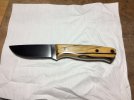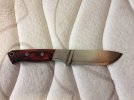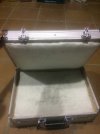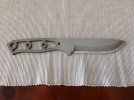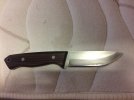- Joined
- Apr 24, 2014
- Messages
- 571
I've been strongly considering giving m390 a shot but have some reservations before doing so and would love some input from you gents if don't mind. 
As of now I only use AEB-L and aside from breaking 90's on the edge and a tad bit of surface prep, pretty much everything is ground post heat treat. I imagine this way of doing things will have to change with m390 but just how abrasion resistant will it be post heat treat? Ceramic belts only or will I still be able to use finishing belts (trizact,cork,etc)?
Also, will I have any issues with drilling or cutting on the bandsaw? I believe I've read about other makers saying it was almost impossible to cut the higher vanadium steels on their bandsaws. I don't believe m390 falls into this category but I really do not know.
Thank you in advance for any and all information guys!
Blessings,
Joshua
As of now I only use AEB-L and aside from breaking 90's on the edge and a tad bit of surface prep, pretty much everything is ground post heat treat. I imagine this way of doing things will have to change with m390 but just how abrasion resistant will it be post heat treat? Ceramic belts only or will I still be able to use finishing belts (trizact,cork,etc)?
Also, will I have any issues with drilling or cutting on the bandsaw? I believe I've read about other makers saying it was almost impossible to cut the higher vanadium steels on their bandsaws. I don't believe m390 falls into this category but I really do not know.
Thank you in advance for any and all information guys!
Blessings,
Joshua

